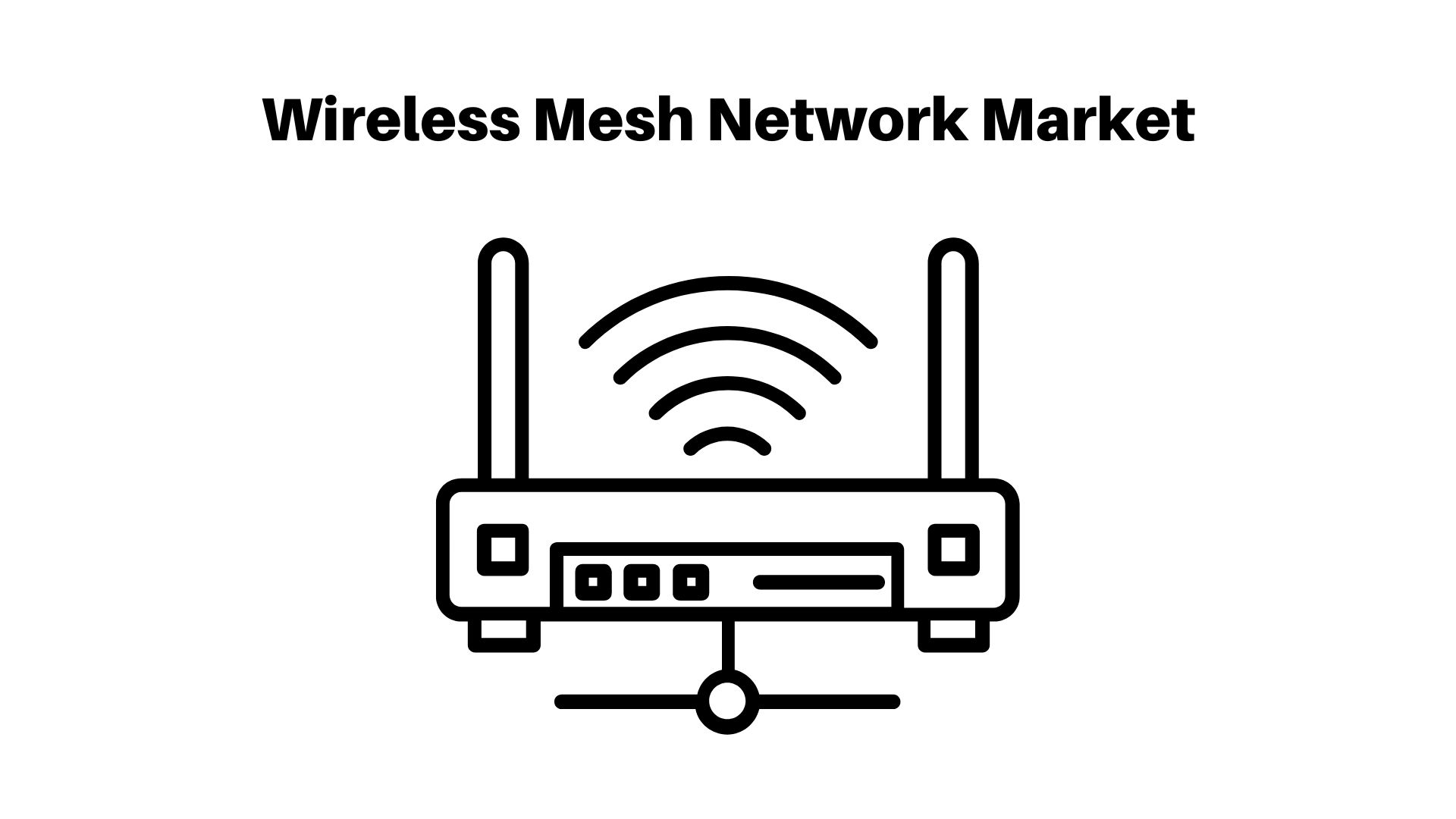Wireless Mesh Network Market Research Report (CAGR- 13.3% ) + Competitive Analysis by 2032

Page Contents
Market Overview
The Wireless Mesh Network (WMN) market is an emerging sector predicted to expand rapidly over the coming years. A Wireless Mesh Network utilizes wireless technology for interconnecting nodes or devices together, creating a self-configuring and self-healing network infrastructure.
The global Wireless Mesh Network market was valued at USD 7.57 billion in 2022 and is projected to grow at a compound annual growth rate (CAGR) of 13.3% between 2022 and 2032.
The growth of the Wireless Mesh Network market can be attributed to several factors, including:
In industries such as transportation, hospitality, and healthcare, there is an ever-increasing need for reliable and efficient wireless communication systems.
The adoption of the Internet of Things (IoT) and smart devices is on the rise, necessitating a reliable and scalable wireless communication infrastructure to support them.
Advances in wireless technology, such as 5G and Wi-Fi 6, have significantly enhanced the performance and dependability of wireless networks.
Government initiatives to encourage the adoption of smart city infrastructure and transportation systems.
There is an increasing need for high-speed internet connectivity in rural areas and developing countries.
We Have Recent Updates on the Market in Sample Copy@ https://market.us/report/wireless-mesh-network-market/request-sample
Key Takeaway
- The Wireless Mesh Network market is an emerging sector that is expected to experience rapid growth over the coming years.
- The market is being driven by an increase in demand for reliable and efficient wireless communication systems across various industries such as transportation, hospitality, and healthcare.
- Advances in wireless technology and the adoption of the Internet of Things (IoT) are anticipated to further fuel the growth of this market.
- North America is currently the leading market for Wireless Mesh Networks, followed by Europe and Asia-Pacific.
- The Asia-Pacific region is expected to experience rapid growth over the coming years, driven by government initiatives to develop smart city infrastructure and an increasing need for high-speed internet connection.

Regional Snapshot
- North America is currently witnessing a boom in wireless mesh network installations due to the increasing demand for fast internet access and smart city infrastructure. As such, this region boasts the largest market for these networks.
- Europe: The second-largest market for wireless mesh networks, driven by rising government initiatives to promote intelligent transportation and smart city infrastructure deployment.
- Asia-Pacific: The region with the fastest-growing market for Wireless Mesh Network, propelled by escalating government efforts to build out smart city infrastructure and escalating demand for high-speed internet connectivity.
- Middle East and Africa: As expenditures in smart city infrastructure increase and demand for high-speed internet access rises, the market for wireless mesh networks in these regions is expanding.
- Latin America: As the infrastructure for smart cities is developed, there is a growing demand for high-speed internet access, which is boosting the market for wireless mesh networks in the region.
Drivers
- There is a rising demand for reliable and efficient wireless communications systems. WMN provides a robust wireless communication infrastructure that can be used by various industries such as transport, hospitality, and healthcare to ensure their success.
- Advancements made in wireless technology: The performance and reliability of wireless networks have been improved by advances in wireless technology such as Wi-Fi 6 and 5G. This has increased the demand for wireless networking solutions like WMN.
- Adoption of IoT devices and smartphones: IoT devices and smartphones are driving the need to have reliable and scalable wireless communication infrastructure. This is where WMN excels.
- Initiatives by the government to promote smart city infrastructure: Around the world, governments invest in smart city infrastructure. This infrastructure requires a robust and scalable wireless communications infrastructure. This need can be met with WMN.
- Demand for high-speed internet connectivity growing: Rural areas and developing nations have a growing need for high-speed Internet connectivity. WMN can bridge the digital divide by providing reliable, efficient wireless communication infrastructure.
Restraints
- High Deployment and Maintenance Costs: Implementing and maintaining Wireless Mesh Networks (WMNs) can be costly, particularly in large networks. This poses a major barrier for small and medium-sized businesses looking to adopt WMN solutions.
- Security Concerns: Wireless networks, including WMN, can be vulnerable to security breaches due to their distributed nature. This poses additional difficulties when it comes to protecting data privacy and security.
- Interference from Other Wireless Networks: WMN relies on radio waves to transmit data, which may be disrupted by other wireless networks operating within the same frequency range. This could result in reduced network performance and reliability.
- Absence of Standards: At present, there is no standardized protocol for World Media Networking (WMN), making it difficult to integrate different vendor solutions and restricting interoperability.
- Limited Range: WMN typically has a shorter range compared to other wireless networking solutions such as Wi-Fi. This makes it less suitable for large-scale deployments or applications requiring long-range connectivity.
Opportunities
- Governments around the world are investing in smart city infrastructure, necessitating a robust and scalable wireless communication system. WMN is an ideal solution to this need, offering reliable connectivity for various smart city applications.
- The emergence of Industry 4.0: Industry 4.0 is an evolving trend toward the integration of advanced technologies, such as IoT, artificial intelligence, and machine learning into industrial processes. WMN can offer a dependable and scalable communication infrastructure to support these advancements, leading to increased efficiency and productivity.
- Growth of the Internet of Things (IoT): As IoT adoption continues to accelerate, WMN is well suited to provide reliable and scalable wireless communication infrastructure. Our solutions can support a range of IoT applications with efficient connectivity.
- Expansion of 5G Networks: The expansion of 5G networks is anticipated to present opportunities for WMN, as the high-speed and low latency connectivity provided by 5G can be utilized to backhaul WMN traffic and enhance network performance.
- Increased Demand for Wireless Backhaul Solutions: Wireless Mesh Network (WMN) can be utilized as a wireless backhaul solution to provide connectivity to remote or hard-to-reach places, making it particularly suitable in developing countries or rural areas where traditional wired backhaul solutions may not be viable.
View Detailed TOC of the Report: https://market.us/report/wireless-mesh-network-market/table-of-content/
Challenges
- Limitation in Range and Scalability: WMMN typically has a shorter range compared to other wireless networking solutions such as Wi-Fi. This makes it less suitable for large deployments or applications requiring long-range connectivity. Furthermore, as the network grows larger and more complex to manage, this could create potential scaling issues.
- Interference from Other Wireless Networks: WMN relies on radio waves to transmit data, which may be disrupted by other wireless networks operating within the same frequency range. This could result in reduced network performance and reliability.
- Deployment and Maintenance Costs: Deploying and maintaining WMN systems can be expensive, especially in large networks. This presents a major obstacle for small and medium-sized businesses looking to adopt this technology.
- Security Concerns: Wireless networks are susceptible to security breaches, and WMN is no exception. The distributed nature of WMN makes it more difficult to protect, raising concerns about data privacy and security.
- Lack of Standardization: Without a standardized protocol for WMN, it may be difficult to integrate different vendor solutions and restrict interoperability.
Key Market Segments
Type
- Sub 1 GHz Band
- 2.4 GHz Band
- 4.9 GHz Band
- 5 GHz Band
Application
- Hospitality
- Government
- Logistics
- Mining
Education - Health Care
Key Market Players
- Strix Systems orporated
- ABB
- Digi International
- Aruba Networks
- General Dynamics Mission Systems
- Cambium Networks
- Synapse Wireless
- Vigilent
- Firetide
- Cisco Systems
- Rajant Corporation
- Fluidmesh Networks
- ArrowSpan
- Concentris Systems
Report Scope
| Report Attribute | Details |
| The market size value in 2022 | USD 7.57 Bn |
| Revenue forecast by 2032 | USD 26.39 Bn |
| Growth Rate | CAGR Of 13.3% |
| Regions Covered | North America, Europe, Asia Pacific, Latin America, and Middle East & Africa, and Rest of the World |
| Historical Years | 2017-2022 |
| Base Year | 2022 |
| Estimated Year | 2023 |
| Short-Term Projection Year | 2028 |
| Long-Term Projected Year | 2032 |
Frequently Asked Question
Q: What is the current market size for the Global Wireless Mesh Network Market?
A: According to a report by Market.us, the Global Wireless Mesh Network Market was valued at USD 7.57 billion in 2022 and is expected to reach USD 26.39 billion by 2032, growing at a CAGR of 13.3% during the forecast period.
Q: What are the key segments of the Global Wireless Mesh Network Market?
A: The Global Wireless Mesh Network Market can be segmented based on type (Sub 1 GHz Band, 2.4 GHz Band, 4.9 GHz Band, 5 GHz Band), application (Hospitality, Government, Logistics, Mining, Education, Health Care), and geography (North America, Europe, Asia-Pacific, Latin America, and Middle East & Africa).
Q: Who are the key players in the Global Wireless Mesh Network Market?
A: Some of the key players in the Global Wireless Mesh Network Market include Strix Systems operated, ABB, Digi International, Aruba Networks, General Dynamics Mission Systems, Cambium Networks, Synapse Wireless, Vigilent, Firetide, Cisco Systems, Rajant Corporation, Fluidmesh Networks, ArrowSpan, Concentric Systems.
The team behind market.us, marketresearch.biz, market.biz and more. Our purpose is to keep our customers ahead of the game with regard to the markets. They may fluctuate up or down, but we will help you to stay ahead of the curve in these market fluctuations. Our consistent growth and ability to deliver in-depth analyses and market insight has engaged genuine market players. They have faith in us to offer the data and information they require to make balanced and decisive marketing decisions.



